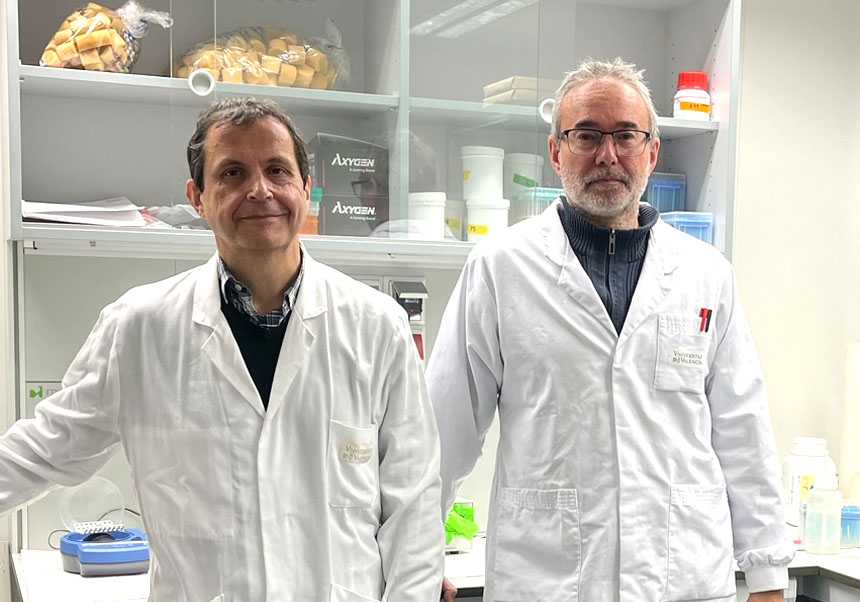
Researchers Rubén Artero and Arturo López, from the University Institute of Biotechnology and Biomedicine (BIOTECMED) of the University of Valencia (UV), and from the INCLIVA Translational Genomics Research Group, have just published a paper on the treatments in Drug Discovery Today about the rare disease myotonic dystrophy type 1 (DM1).
The article focuses on those treatments for DM1 that are in active development. This rare and incurable disease affects one in 8,000 people and can lead to weakness, muscle atrophy, inability to relax muscles, malignant cardiac arrhythmias, and cognitive deficits, reducing the quality and life expectancy of patients. The publication coincides with the celebration of World Rare Disease Day, this February 28.
The importance of this work is its intention to “focus on treatments that are expected to reach patients and not only those that have worked in laboratory conditions, which is usual”, explains Artero, also a professor of Genetics from the UV. Throughout this research there have been advances that increase the prospects that, in the medium term, it will be possible to establish an effective treatment for this disease.
Among these advances, several drug candidates to treat DM1 have progressed in their clinical evaluation and are closer to obtaining authorisation by regulatory agencies. In addition, the number of drug development programs in DM1 has increased and the first activity results have been obtained in patients, in a controlled manner, of a nutritional supplement that is already available on the market (MYODM). Positive results are also being achieved in patients with drugs based on therapeutic oligonucleotides that have entered the clinic during 2022 (AOC1001 and DYNE-101). The use of this type of molecules will reach the milestone of first use in humans in 2023.
After more than 20 years of basic research, the great challenge is to transfer knowledge about the mechanism of disease development to useful drugs for patients. Drug development programs active in the disease are classified into three broad categories: drugs with a current indication that are found to be used in DM1 (drug repositioning); oligonucleotide-type drugs, which consist of a small portion of RNA that modulates endogenous cell expression; and drugs based on CRISPR/Cas9 (where the Cas9 protein can be directed to defined sequences in DNA or RNA to edit or degrade these molecules for therapeutic purposes) and other approaches capable of modifying the genome or its RNA expression.
One of the drugs in development mentioned in the review work is promoted by the Valencian company Arthex Biotech, a spin-off of the UV and INCLIVA, and has emerged from the Translational Genomics laboratory.
Article: Marta Pascual-Gilabert, Ruben Artero, Arturo López-Castel. «The myotonic dystrophy type 1 drug development pipeline: 2022 edition». Drug Discovery Today, Volume 28, Issue 3, 2023, 103489, ISSN 1359-6446, https://doi.org/10.1016/j.drudis.2023.103489
.png)






